

Prior Episodes | 7975 (2 BBY) | Next Episodes
Continuity & Analysis
Star Wars: Rebels - Imperial Supercommandos (2016) [S3E7]
When the rebels lose contact with Concord Dawn, Sabine, Ezra, Chopper, and Mandalorian
prisoner Fenn Rau investigate. They find an unexpected, deadly new threat waiting.
Star Wars: Rebels - Iron Squadron (2016) [S3E8]
The Ghost crew encounter three young rebels, while Thrawn plots a trap for his enemies.
Star Wars: Rebels - The Wynkahthu Job (2016) [S3E9]
The Ghost crew teams with Hondo and Azmorigan for a weapons score.


CONTINUITY
These three standalone episodes are all about the Rebels gathering future allies.
The planets Mykapo and Wynkahthu are seen for the first time. Six worlds are seen in these episodes:
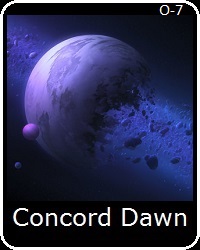

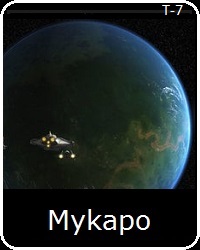
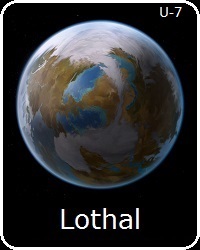
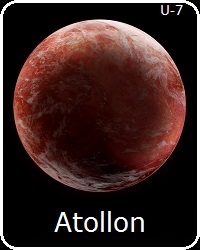

These episodes take place in the second quarter of 7975 (2 BBY). Ezra has now been Kanan's apprentice for two and a half years.
- It has been just over a year since Rau was captured in 'The Protector of Concord Dawn' (S2E13). Rebel ships have been using the Concord Dawn
system as an unmonitored way point in the interim, and at some point this became noticed by the Empire or its proxies.
- The Mandalorian, holographic, strategy, board game that Rau and Sabine are playing is called cu'bikad, sometimes spelled cubikahd.
- Commander Sato's mention of conferring with the other Rebel cell leaders indicates that despite still being a clandestine organization,
the Rebel Alliance is already formally in existence as military formation as well as a political entity.
- In 'The Protector of Concord Dawn' (S2E13), Sabine implied that Concord Dawn was physically fragmented by warfare. When Ezra asks directly,
Rau explains that "the Mandalorians have endured wars since before the formation of the Republic", reinforcing that warfare was the cause.
Once again their landing and approach to the surface with the Mandalorian base is not shown, and once again the implication seems to be
that they are on the fractured planet Concord Dawn, however this is unlikely. Supplementary material again says they are on the 3rd moon.
Main Article: Planetology
- The elimination of the other Protectors makes Fenn Rau the last living Protector. In future episodes he has other priorities besides recruiting more
Protectors, and the climate is certainly not conducive to such activities, however he does risk the loss of the traditional organization if he is
killed without gaining the loyalty of a successor. It is unknown if the Protectors were permanently lost due to the Civil War, however the severe
reduction and scattering of Mandalorian population during and after the Civil War makes this far more likely. Rau does state clearly that his
primary motivation is now revenge, telling Sabine "All I care about is making Saxon and his traitors pay."

- This is Gar Saxon's first on screen appearance, but chronologically he was last seen 17 years earlier in The Clone Wars 'Shattered' (S7E11),
where he fought against the Republic in the Battle of Mandalore, two days before the Republic became the Empire. At some point after,
the Empire helped to replace Bo-Katan Kryze with Saxon to subvert an independent Mandalore. Saxon was made the Imperial Viceroy,
a leadership claim made stronger by his being from Clan Vizsla, essentially restoring the regime overthrown at the end of the Clone Wars.
Main Article: Darth Sidious and The Plan
- Ezra claims he "didn't even know Mandalore was part of the Empire", mostly because he is playing dumb. This is still a reasonable statement, as
the Imperial presence in this sector is less conspicuous. The Empire is not physically everywhere, but claims jurisdiction over the whole galaxy.
- Ursa Wren was last seen 17 years earlier on the side of Bo-Katan's government. Saxon tells Sabine her mother is looking for her, although in
Ursa's first on screen appearance she tells Sabine that she hoped she would stay away because it keeps her safe. This suggests Ursa is
exaggerating her efforts to Saxon. Sabine's disloyalty compromised her family's "name and standing", forcing them to compromise politically.

Sabine loses both of her expensive, Mandalorian WESTAR-35 blaster pistols, and does not recover them before fleeing
the moon. Since she has two in the next episode, where does she get her replacements? Does she have a reserve stash
of precision weapons on the Ghost which she isn't sharing with her associates, or did the Rebels go shopping later for
specific high-end weapons just for Sabine's sake? Perhaps she made a specific trip or detour on another supply run to
get them. If so, despite the expense it seems like the Rebels should buy more of these highly accurate blasters.
- Mykapo is a terrestrial planet located in the Ash Worlds Sector, in the Slice region of the Outer Rim. Mykapo has only been shown from space, but
is clearly a verdant planet with abundant water, a breathable atmosphere, and large regions of temperate climate. Based on statements from
this episode, it is clear that it hosts a significant colonial population dominated by Humans, and is moderately significant in the region.
One hemisphere is dominated by a large ocean, while the remainder of the planet is primarily part of a single super continent.

- Iron Squadron is a rebel cell formed on Mykapo, initially led by Commander Sato's brother. It was eventually worn down to a single ship, led
by Mart Mattin, Sato's nephew, apparently independent of the remaining rebels on the surface. After the Rebels withdraw from
Mykapo, Iron Squadron becomes one of the many smaller groups absorbed into the main forces of the Rebel Alliance.
- R3-A3 is an R4 unit, which is confusing. This is similar to the prequel trilogy, where Obi-Wan's droid R4-P17 was an R2 unit, or possibly an R3,
but certainly not an R4. Supplementary material has since designated R4-P17's model as the R4-P which look like R2s, to explain this
inconsistency. This suggests that R3-A3 is an R3-P model, and that they confusingly look like R4 units. This confusion is needless.
- The Empire has installed a blockade over Synistahg, a previously unmentioned world about which nothing is yet known. Troublesome rebellion
has also gripped Mykapo, where the Empire has moved to declare martial law. This is evidently a growing pattern.
- Thrawn dispatches Konstantine in a single light cruiser to personally deal with the rebels over Mykapo. This is likely meant to test Konstantine's
effectiveness in a military operation, and is possibly politically motivated by Thrawn's desire to see him fail, an eventually be replaced.
- Magno-mines are explosive mines designed to magnetically lock to the hull of ships or other metal objects, which can be remotely detonated.
- Hera tells Sato he is "too far away" to get to Mykapo in time to help his nephew. It can be assumed Sato and the Rebel fleet are in the Lothal Sector
or another part of the Dominus Sector as they are usually, possibly in orbit over Atollon. Mykapo is in the Ash Worlds Sector, which borders
the Dominus Sector, in galactic terms a relatively short trip. This is correct, as even traveling to an adjacent sector could take part of an hour.
Sato does in fact arrive later in the battle, which is consistent with his having left after speaking with Hera.
Main Article: Hyperspace Travel
- Hondo was last seen about 3 or 4 months earlier in 'Steps into Shadow' (S3E1-2), having left the Spectres to fend for themselves. Azmorigan was
last seen almost 2 years earlier, in 'Brothers of the Broken Horn' (S2E6), having tried to rob and kill Hondo and Ezra.
- Wynkahthu is a gas giant planet located in the Alderath Sector, in the New Territories region of the Mid Rim, near to the Celanon Spur hyperspace
route. Its upper atmosphere features high winds and large electrical storms with huge vortices at their center. Some levels of the upper
atmosphere have air which is apparently breathable, which is unusual for a gas giant, however not without precedent in this galaxy.


Why can they all breathe Wynkahthu's upper atmosphere? Gas giants observed in the Milky Way do not tend to have
suitable quantities of free oxygen in their atmospheres for breathing. Additionally, most of the air Humans breathe is
relatively inert gas such as nitrogen. Most gas giants are primarily composed of gases which are not safe for lungs to
breathe. In the SW universe, there have been examples of gas planets with breathable zones of their atmosphere,
and this must be another example of one. Ordinarily, if people are using a planet it is already known to be safe. In this
instance, a ship was driven against its will into the atmosphere of an uninhabited planet. It is fortunate that it had
such an atmosphere, or suits would have been required. This does not seem to be a concern for the Ghost's crew.
Main Article: Planetology
- Main power on the Imperial freighter is down, however the gravity plating is still operational. This is consistent with other SW material. There is also
a breathable atmosphere, either because the air systems are as low-powered as the gravity generation, or because the crew was no longer
breathing the air. It has been seen in other SW material that these systems both usually still operate despite a total loss of main reactor power.
ANALYSIS
Planets like Mandalore present a unique threat to the Empire due to their fierce independence and martial tradition. Sidious sought to
neutralize as many of these planets as possible during the Clone Wars by devastating them with war. The subsequent Republic occupation
in the name of defense would prevent the Empire from a confrontation early in its rule which would necessitate invasion. Mandalore was
initially successful in preventing this fate, but eventually fell prey to this treatment due to Maul's unexpected intervention in their affairs.
The result of this invasion and minor civil war was a Mandalorian government in opposition to Imperial authority, but one which was too
weak to ultimately resist Imperial pressure against it. The Mandalore Sector was afforded a fair degree of autonomy by the Empire, and
governed by Mandalorians loyal to it. This spares the Empire a great deal of resources, and placates the Mandalorian cultural need to be
independent. Those that resist will be repressed by their fellow Mandalorians rather than the Empire, keeping them divided and conquered.
The threat posed by defiant Mandalorian groups is why Viceroy Saxon moved against the Protectors when he felt the time was right. Saxon
sees the Empire as the rightful leader of the galaxy according to Mandalorian codes and beliefs. His political philosophy is a Mandalorian
traditionalist vision modified to emulate the Empire's, stressing the similarities of their martial inclination and authoritarian system where
strength is valued. The distance between Sith philosophy and certain interpretations of the Mandalorian religion have never been great,
and historically many Mandalorian groups were enthusiastic allies of the Sith. Saxon's core followers are in essence the same families which
were members or allies of Death Watch, making this government a continuation of their tradition and claim of right to rule. This movement
has now independently chosen to ally with Dooku, Maul, and now Sidious, clearly seeing the Sith as natural allies and philosophically similar.
Saxon believes "the Empire will make Mandalore stronger than ever before", while Sabine correctly observes that only Saxon and his allies
have grown stronger, while Mandalore is a subjugated and enslaved as every other planet with a government loyal to the Emperor.
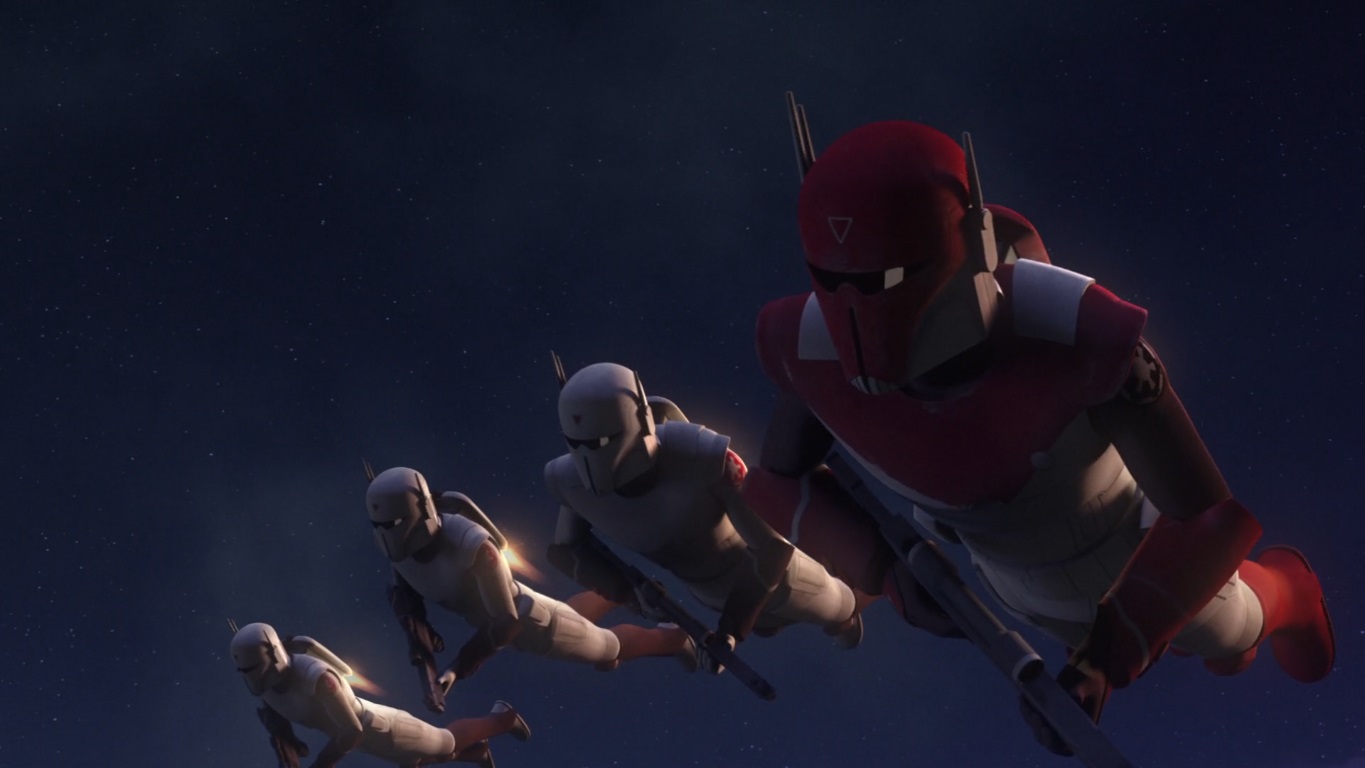
The Empire is facing increased resistance at an accelerating rate, not only as a result of its oppressive policies and repressive actions over
the last two decades, but also as a direct response to the increasingly harsh reprisals of the Empire against its own citizens who speak out
with reasonable grievances. As a result, the Empire has begun a program of gradual escalation which will inevitably spiral out of control
and precipitate the Galactic Civil War. This includes planetary blockades, such as over Synistahg, and declarations of martial law on planets
such as Mykapo. Resistant civilians will be subject to summary arrest and tried under military law, a situation where harsh punishments
are easily meted out for even minor disobedience. Mykapo has no planetary militia or starfighter corps in this time period, and what small
scale armed resistance there was on the planet was primarily defeated by the Empire. Those dissidents who remained on the planet were
in urgent need of evacuation before the Empire arrived with its larger occupation force. Rebel groups still struggle to maintain traction on
their home planets, because the security situation in the galaxy has not yet deteriorated to the point where Imperial resources are overtaxed.
At the same time, the number of challenges to Imperial rule have already necessitated a wider distribution of their forces, and has begun
to compel the Empire to respond to these situations with lesser degrees of overwhelming force. The Rebel Alliance benefits from this tactic,
drawing in displaced republicans and rebel groups to form the core of an interstellar resistance to the Imperial system.
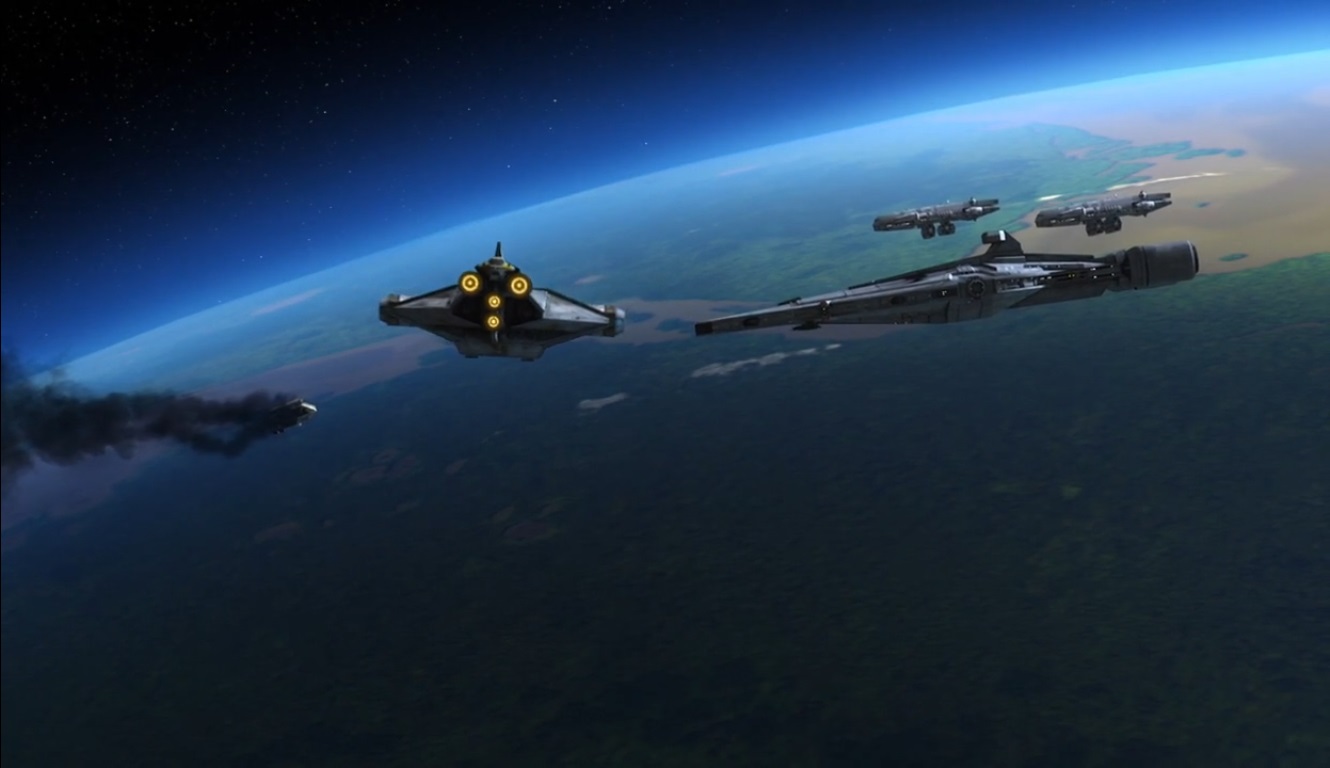
Piracy is still an annoyance for the Empire, despite its powerful forces and large scale military and security apparatus. Attacks against shipping
continue to be an issue, even though the Empire usually abandons its unofficial, criminal-friendly policies when its own resources are attacked.
Pirates have always had to contend with reprisals, and while the risk of stealing from the Empire is certainly greater than dealing with a planet's
defense forces, and the response more deadly than dealing with the Republic was, pirates are driven by opportunism and necessity. Imperial
rule has standardized and restricted all sorts of trade and economic activity, making the prospects for piracy increasingly limited to Imperial
targets. The stringent control placed on unregistered trade in the galaxy have made it harder for those who operate off of the state's radar
to survive, thus creating the need to take bigger risks. The fact that small pirate outfits like Hondo's tiny crew are able to pose a threat to
Imperial shipping indicates how difficult it would be for the Empire to stamp this out completely. Pirates are also sometimes allies of rebel
groups, both because of their shared opposition to the central government, and the common need to procure materials and resources
from official or legal sources whether they like it or not. Some pirates ultimately ally themselves with rebels in active warfare. The Rebel
Alliance is no exception, and the role of illegal activity, theft, and piracy in their formation and development is significant.

FURTHER ANALYSIS
Report Pending